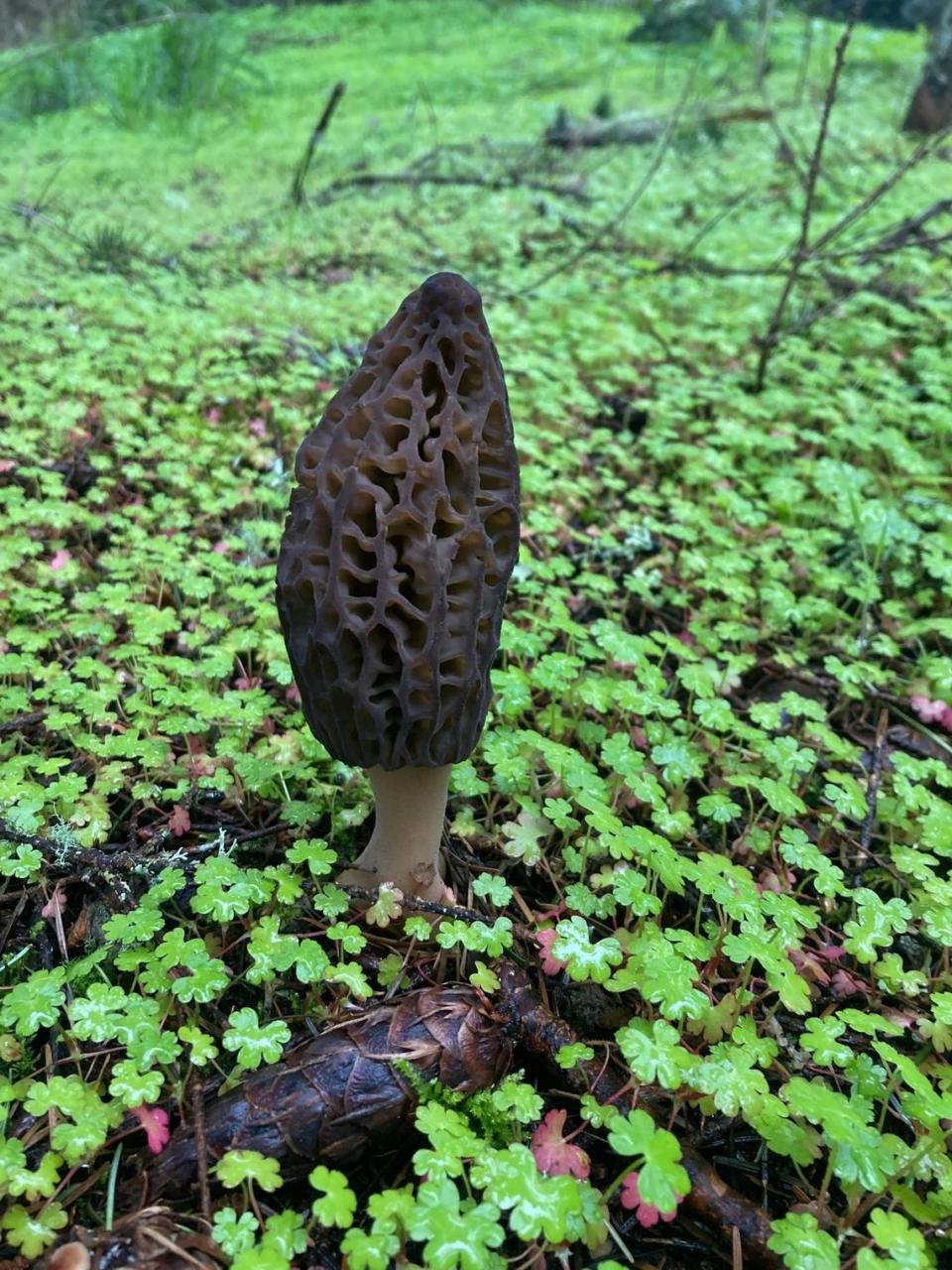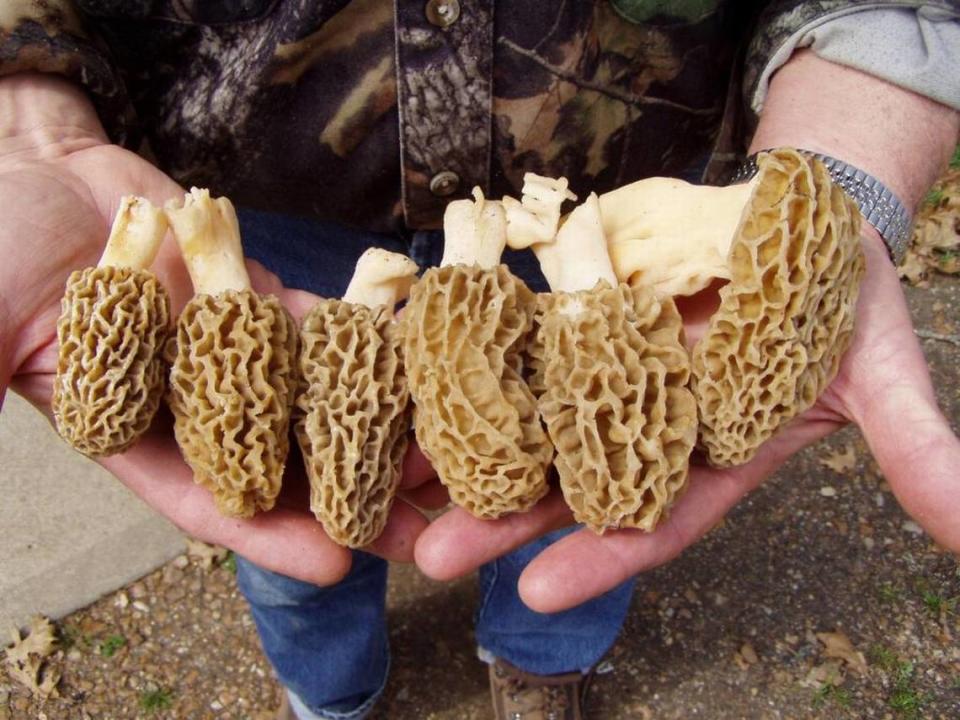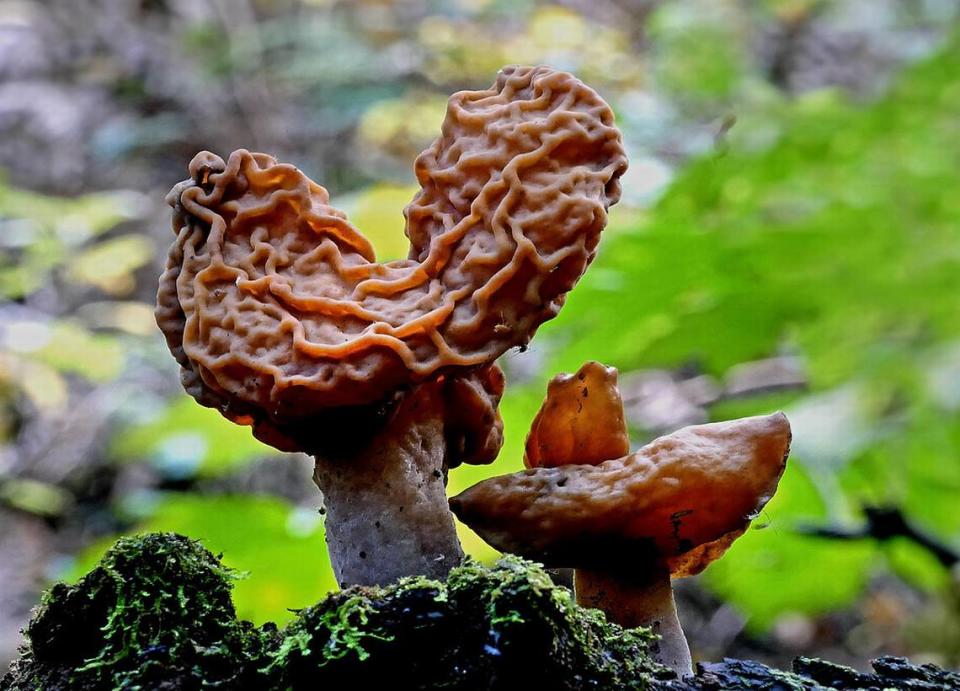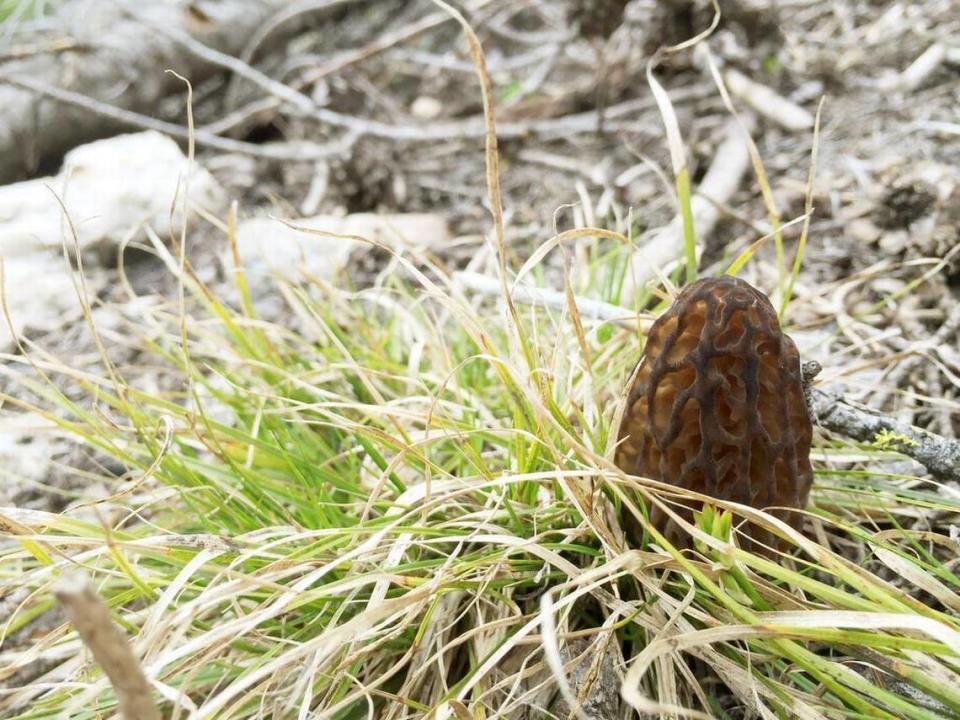Morel mushrooms have returned to Idaho. What to know, how to avoid ‘poisonous’ lookalikes
The hills are alive with the sights of mushrooms! It’s nearing peak mushroom season for both novice and pro foragers in Idaho. The 2023 mushroom season is predicted to be more fruitful than 2022’s, but the less-than-normal weather has made experts wary of being too hopeful.
No matter how experienced you are at finding edible mushrooms in the wild, the best tagline for mushroom foraging is still: “When in doubt, throw it out.”
That mantra is often used when trying to identify the sought-after wild morel mushroom. The morel is abundant in the Pacific Northwest, but so is its cousin, the false morel.
How do morel mushroom varieties differ?
There are several species of morels, but most can be categorized as yellow morels or black morels. There are a few differences between the two.
Most of the species noted in the Pacific Northwest region are black morels, according to Danny Winkler in his book, “Fruits of the Forest: A Field Guide to Pacific Northwest Edible Mushrooms.”
Differences between black and yellow morels
Black morel caps darken over time.
Black morels are found in recently burned areas and around tree species like ash, black cherry, aspens and cottonwood.
Yellow morels are often found around living ash, dead elms, sycamore and apple trees.
Yellow morels can grow larger than black morels and often are more globular.
Morels have been spotted across the United States. Black morels are fairly common on the west coast, while you’re more likely to find yellow morels on the east coast. The mushrooms aren’t often seen in southwest and central U.S.
‘Real’ morel mushroom identification
Both black and yellow morels can be eaten and are considered to be quite tasty. However, they must be dried or cooked thoroughly and properly in order to be edible. If not, the mushrooms can cause digestive problems, nausea and other symptoms.

Black Morels - Morchella elata
Black morels are cone-shaped mushrooms with irregular brownish pits. These pits are arranged vertically with rough parallel grooves. It might even look wrinkly. The cap of the mushroom can be up to 2.5 inches tall and 1.25 inches wide, according to Guillaume Eyssartier in his book, “The Ultimate Guide to Mushrooms.”
The stem of a black morel will be cream-colored and entirely hollow. The most-frequently recommended method of morel identification is cutting the mushroom in half — only true morels have hollow stems.
The semi-fragile mushrooms have a faint odor and sweet flavor. They often grow around certain tree species and in recently burned areas. Morel mushrooms also thrive on decaying plants and dead organic material such as branches, according to experts.

Yellow Morels - Morchella esculenta
Yellow morels are often globe-shaped with deep, uneven pits. The cap can appear beige, yellowish-brown or tinted red and can grow up to 2.75 inches tall and wide. Its stem will be entirely hollow, cream-colored and smooth, according to mycologists.
The mushrooms grow around various deciduous trees and will have semi-fragile, thin skin. Yellow morels, like their black counterpart, also have a faint odor and sweet flavor.
False morel mushroom identification
If you think you’ve spotted a wild morel mushroom, make sure you’re absolutely positive in its identification before you take it home to eat or sell.
Morel species are often confused with false morel species, the most common in Idaho is Gyromitra esculenta. These mushrooms have marbled stems with pits and flesh, rather than the morel’s signature hollow stem. The cap also has a slightly different look, more like a brain than a misshapen honeycomb.

Certain varieties of false morels can be poisonous. It is recommended to avoid consumption entirely.
“Morels resemble other closely related species frequently found in similar habitats,” the U.S. Forest Service warns on false morels. “These run the gamut from choice to deadly poisonous, so learning to identify true morels from ‘false’ morels is critical.”
If you’re unsure about a mushroom’s cap and can’t tell if it’s a real or false morel, cut it in half. It’s easier to tell the difference between a hollow and marbled stem than the two caps.
“Cut a morel in half from top to bottom,” states Frank Hyman in his book, “How to Forage for Mushrooms Without Dying. “Both the stalk and cap should have enough of a void that you could almost stick one on every digit like finger puppets.”
Hyman offers an easy mnemonic device for remembering the key between morels and false morels: “If it’s hollow, you can swallow.”
False morel mushrooms contain a toxic substance that is a gastrointestinal irritant. This can be cooked out and is still eaten in some parts of the world, but false morels can also be carcinogenic, so they should not be eaten. Research over time has posited different explanations as to why this occurs, but no general consensus has emerged. Either way, never eat raw morels.
Mushroom advice from experts
One of the best ways to learn about foraging and mushroom identification is to go foraging with experts like the Southern Idaho Mycological Association which is based out of Boise.
Groups like mushroom clubs and mycological societies meet and often hold forays to look for mushrooms as a group. Forays are great opportunities for beginners to learn alongside experts, ask questions and work on their identification skills.
If you or someone you know thinks they’ve been poisoned by a mushroom, call poison control at 1-800-222-1222. Save an uncooked sample of the mushroom they ate, or one from the same batch.

Wild mushroom recipes
There is a reason morel mushrooms are sought after by chefs across the world, as they are only grown in the wild. The flavor and health benefits of the fungi have made them quite popular in Asia in particular. Depending on the region, preparation and other details, a pound of morels can go for around $50.
Plenty of recipes are available online, and Eyssartier provides a fairly simple recipe for morel sauce in his book:
Morel sauce
Preparation: 10 minutes. Cook time: 15 minutes. Serves: 6.
“Note: This sauce is delicious with grilled white meats (veal or chicken) or over green asparagus accompanied by poached eggs and salmon roe. You can also make this recipe using dehydrated morels. Soak them in water for a few minutes before using.”
Ingredients
2 shallots
3 ½ ounces fresh morels
A few chive stems
1 ¾ tablespoons butter
6 ¾ tablespoons white wine
6 ¾ tablespoons chicken stock
1 cup heavy cream
Salt and freshly ground pepper
“Peel and chop the shallots. Cut the morels in half vertically and clean them under water to get rid of sand. Chop the chives as finely as possible.
“In a pan, melt the butter and cook the chopped shallots with the morels over medium heat. When the shallots are translucent, pour in the wine and chicken stock, then reduce until almost all of the liquid is gone.
Next add the cream and bring to a boil. Reduce again until the liquid has reduced by half in order to obtain a thick sauce. Salt and pepper to taste. Sprinkle with chives and serve immediately.”
Idaho mushroom events
Throughout the Pacific Northwest, people who love mushrooms are getting together during the 2023 season. These events are open to the public, though some require registration or being on a wait list.
The Southern Idaho Mycological Association is hosting a spring foray from June 2 through June 4. The group will meet at Quaker Hill Lodge in McCall.
SIMA will also host a fall foray at Quaker Hill Lodge, but a date is yet to be determined.
Twin Eagles Wilderness School will host an adult-only morel mushroom hunting workshop. Times and dates are yet to be determined.
Find more mycological societies and events online.

